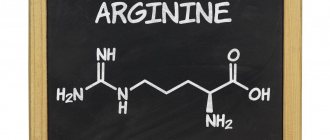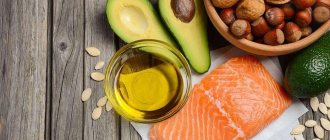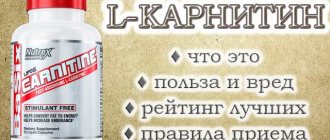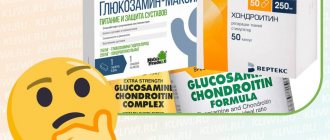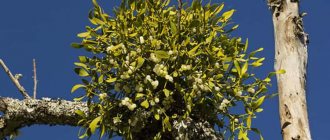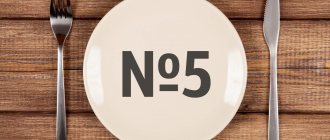Pectin or pectic substance is an adhesive substance, a polysaccharide formed from galacturonic acid residues and present in most higher plants - fruits, vegetables, roots and some types of algae. Being a structural element of tissues, pectins help maintain turgor and increase plant resistance to drought and long-term storage.
Pectin as a substance was isolated 200 years ago from fruit juice by the French chemist Henri Braconneau. The first factories for mass production of pectin were built in the 30s of the twentieth century.
Types of pectin and its calorie content
Pectin is considered a low-calorie product because its value is 52 kcal/100 g. It contains virtually no proteins and no fat at all, consisting mainly of carbohydrates. The polysaccharide is not absorbed in the body, but only removes harmful substances.
All types of pectins are divided into three groups:
- HM;
- LM;
- LMA.
HM – highly methoxylated pectins. The most popular and widely used. They account for 70% of the total market volume and are used for the production of various confectionery products (marshmallows, marmalade, jams, etc.)
LM – low methoxylated pectins. Their manufacturing process is more complex, so they are more expensive. Used for products with bio additives.
LMA – amidated pectins. During manufacturing, they undergo additional processing that changes their functional properties. More often, such substances are present in the compositions of low-calorie jams and in fillers for yogurt or preserves.
In industry and at home, this substance is used in two forms: powder and liquid extract. They are not interchangeable and each of them is used differently. The powder is dissolved in juice or mixed with fruit, and the liquid extract is added only to hot foods. In stores, pectin can often be bought in powdered bags.
Functional nutrition
Tomsk Production offers specialized products for catering under hazardous working conditions, which:
- Fully comply with legal requirements;
- They have high taste qualities;
- Economically beneficial.
Nectars with pectin are indispensable for protecting the body of children and adults in environmentally unfavorable areas and large industrial cities. These products were developed specifically for enterprises with hazardous working conditions, as an alternative means of preventing the consequences of exposure to harmful production factors on the body.
Human health in production conditions depends on many factors, among which the leading role is played by unfavorable working conditions, which leads to an increase in occupational and work-related diseases. Their prevention requires the development and implementation of a set of preventive measures. Among them, a balanced diet plays an important role. In modern conditions, it is impossible to adequately provide the body with all the nutrients necessary to maintain human life through traditional nutrition. In 2003, Tomsk Production, together with the Kemerovo Technological Institute of the Food Industry, developed a recipe for food products that have a therapeutic and prophylactic effect, and at the same time are familiar to most people. The result of cooperation was a fundamentally new product - natural juices and nectars from wild berries, enriched with pectin (a powerful natural absorbent). Subsequently, the products underwent clinical trials at the clinic of the Federal Scientific Center for Hygiene named after. F.F. Erisman" of Rospotrebnadzor of the Russian Federation. As a result, the therapeutic and prophylactic properties of juices and nectars enriched with pectin were fully confirmed, and, accordingly, a hygienic conclusion was obtained.
The feasibility of using products in enterprises with hazardous working conditions instead of milk was approved by the decision of the Plenum of the Scientific Council 47 on medical and environmental problems of workers of the Ministry of Health and Social Development of the Russian Federation, the Russian Academy of Medical Sciences dated May 20, 2009, which allows the use of products “in the medical- preventive nutrition for workers in hazardous working conditions, including milk replacement.” Currently, in connection with the entry into force of Order No. 45-N of the Ministry of Health and Social Development of the Russian Federation, the available documentation allows the use of our products both to replace milk and as a supplement to milk when workers come into contact with inorganic compounds of non-ferrous metals .
Advantages of juices and nectars enriched with pectin compared to commonly used milk:
- The obvious usefulness of the product, confirmed by clinical trials.
- Acceptable price.
- Convenient doypack packaging 200 ml. with a dispenser, allows you to comply with sanitary and hygienic standards and rules for the use of products.
- The product is completely ready for use and does not require special preparation.
- The technology of hot filling into aseptic packaging and the gentle pasteurization mode allows you to preserve the vitamin and mineral composition and not use preservatives in the manufacture of products.
- A long shelf life (1 year), and a temperature regime that does not require special storage and transportation conditions (from 0 to 25ºС), can significantly reduce costs for delivery, storage and distribution of products.
- A wide range allows you to choose the product you like best.
Work with large enterprises in various industries has shown that the inclusion of such products in the diet of workers associated with unfavorable working conditions can reduce the incidence of illness, increase efficiency and endurance.
The benefits and harms of pectin
Like any product, pectin can bring both benefits and harm. From a medical point of view, the following advantages of using this substance can be noted:
- improving the metabolic rate in the body;
- lowering blood cholesterol levels;
- improvement in the functioning of the circulatory system;
- normalization of the gastrointestinal tract (anti-inflammatory and analgesic effect);
- removal of heavy metals, toxins and other harmful substances from the body;
- reducing the risk of heart disease and cancer;
- normalization of intestinal microflora;
- participates in the process of accelerating the breakdown of fats, which leads to weight loss.
Taking pectins in quantities exceeding the norm is also harmful. This may lead to the following consequences:
- increased fermentation process and excessive flatulence in the intestines;
- impaired absorption of substances such as zinc, magnesium, iron and calcium;
- the appearance of constipation;
- pain in the intestinal area;
- impaired absorption of proteins and fats.
An overdose of pectin can only occur with additional intake of dietary supplements. In its natural form, as part of fresh fruits and vegetables, this polysaccharide will not cause harm. People who regularly consume pectin have healthy, elastic, clean skin.
How to cook aromatic roast with meat, potatoes and mushrooms in pots according to a homemade recipe.
If you don’t have enough time to cook, cook soup with sausage for the first course - it’s tasty, satisfying and simple.
Take note of the recipe for incredibly delicious muffins that cook in the microwave in just 5 minutes.
How to determine the concentration in fruits
The concentration of pectin depends on the stage of ripeness of the fruit. This is, of course, good advice. But how can you determine whether the fruit is ripe enough to harvest? Well, it’s true, you shouldn’t take every fruit to the laboratory for research. And for such cases, there is one trick that will help determine the approximate concentration of the substance.
To do this, you will need a teaspoon of crushed fruit and 1 tablespoon of alcohol. Mix the two ingredients, place in a tightly sealed container and shake lightly. If the fruit contains a high concentration of pectin, the juice released will turn into a strong gel-like lump. Low pectin content will result in the formation of small rubbery particles. A medium level of pectin should produce results in the form of several pieces of a jelly-like substance.
Pectins are found in different quantities in fruits, vegetables, and root vegetables. The highest content of pectin substances is in different varieties of apples, beets, carrots, oranges, and plums.
| Content of pectin substances | Products |
| High level | Apples; blackberry; citrus peel; currant; grape; quince; plums |
| Average level | Overripe apples; cherry; bird cherry; raspberries |
| Low level | Apricots; blueberry; figs; pears; strawberry |
There are several types of pectin:
- yellow - gives products a viscous texture, is heat-resistant, does not dissolve again;
- NH-pectin is thermoreversible, allows you to prepare dishes with a consistency from sauce to jelly;
- FX58-pectin - suitable for making milk jellies and mousses.

Based on their origin, natural citrus and apple pectin are distinguished. There is also a structurally modified product - with the addition of buffer solutions, which allows you to adjust its properties.
Products high in pectin
The recommended intake of pectin is 25 g per day. It is better to consume it in its natural form. Then it will be better absorbed by the body and bring only benefits. Record holders for the content of this useful polysaccharide: apples and oranges. In their fiber the content of this substance reaches almost 2%.
There are other, no less healthy fruits that must be included in the diet of a person who cares about their health, these are:
- lemon, grapefruit, lime;
- banana;
- pear;
- melon;
- quince;
- carrot;
- persimmon, mango;
- blueberries, strawberries and cherries;
- apricots;
- fresh pineapples;
- plum berries;
- dates and figs.
It is difficult to consume the daily norm in its natural form; to do this you need to eat almost a kilogram of fresh fruits or berries. But even with regular intake of at least 15 grams, a person will feel a significant improvement in his condition. It is very useful to drink fresh juices, and it is recommended to consume them together with pulp. In order not to lose healthy pectins.
What is pectin
Pectin is a complex carbohydrate of natural origin. Chemical formula (C6H8O6)n(O–CH3)m, where n is approximately 50 and m ranges from 25 to 80% of n. The substance is formed by galacturonic acid residues. Pectins provide elasticity to plant tissues and increase drought resistance.
The substance was discovered by the French chemist Louis Vauquelin in 1790. In 1825, the scientist Henri Braconneau studied it, and he gave the product its name. It was first produced commercially in Germany in 1908.
In industry, pectin is obtained by acid extraction from apples, citrus fruits, and sugar beets. The process ends with standardization - this is a change in the properties of pectin, taking into account its purpose. Standardization occurs by adding buffer solutions.
Ready pectin is a beige, cream, brown, odorless powder. Apple pectin is darker than citrus pectin. The powder absorbs water, swelling as it does so. It can increase in volume by 20%, and with further addition of water it dissolves.
In addition to powder, there is liquid pectin. It is also used for food purposes, but is more often used in medicine.
100 grams of liquid product contain 11 kcal and 2 grams of fiber. The rest is taken up by water. 100 grams of dry product contain 335 kcal, 90 g of carbohydrates, 8 g of fiber. Mineral content: calcium, iron, phosphorus, zinc, sodium.
The global market for pectin substances, large production facilities are located in Europe, South America, and Africa. Annual production volume is 28–30 thousand tons. 70% of pectin is obtained from citrus fruits, 30% from apples.
To watch the lecture about the substance:
Signs of excess and deficiency in the body
Pectin substances must be supplied to the body daily. Their lack is manifested by indigestion, constipation, and abdominal discomfort. A change in the composition of the intestinal microflora leads to bloating and excessive gas formation.
Excess pectin substances are accompanied by heaviness in the abdomen and diarrhea. The optimal amount is 10 grams per day. That's how much a kilogram of fresh fruit contains. Therefore, if there is a lack of pectin, dietary supplements should be used.
Areas of application of pectin, and how to make it yourself at home

Pectin is obtained from fruit and berry squeezes. In the food industry it is used to prepare: jam, preserves, jelly, marmalade, mayonnaise and ketchup. This polysaccharide is also a good preservative. In pharmacology, jelly-like capsules for powder are made from it. This substance is also included in many face masks and creams. And in the tobacco industry it is used as glue to join damaged tobacco sheets.
You can buy it at the store, but making it at home has many benefits. Firstly, you can be completely confident in its environmental friendliness and quality. Secondly, it will be a 100% natural product, without chemical impurities. The preparation itself is simple and does not take much time.
Apple pectin
To prepare it, it is better to take apples from your own garden or buy fruits from your region.
Ingredients:
- water – 120 ml;
- fresh apples – 1 kg.
Cooking sequence:
- Washed and dry apples should be cut into 8 slices. There is no need to clean them;
- Place the chopped apples in a thick-bottomed pan and add water;
- Cook over low heat, without bringing to a boil, for 30 minutes, stirring constantly;
- We take another container, cover it with a nylon sieve, and transfer the boiled apples into it;
- The juice that drains into the container contains pectin. It can be preserved in jars or frozen in ice cube trays.
Home cooking
Pectin can be prepared at home
Apple pectin is available for purchase as a dietary supplement in pharmacies. You can also get it yourself at home, more often from the core and peel. In the absence of a sufficient amount of raw materials, they are prepared as they become available, frozen in the refrigerator.
For 1 kg you will need 2 liters of water.
Technology:
- the remains of the apples are cut into 2-3 cm pieces and placed in a suitable enamel container;
- add water and bring to a boil;
- reduce heat and simmer for about 1 hour, stirring regularly to avoid burning;
- when the apple waste becomes soft, the mixture is removed from the heat, cooled and filtered through several layers of gauze, for which a colander is lined with gauze and left for a couple of hours until the thick liquid flows.
The resulting preparations are stored frozen or canned.
Conservation technology:
- the strained pectin juice is heated to boiling point;
- pour into sterilized glass jars up to 1 cm from the top;
- cover with lids and additionally keep in a water bath for up to 10 minutes.
Probably, everyone has a grandmother or a friend who, as soon as fruit appears in the gardens, starts making jams. And at first, this process seems like real magic - a liquid mixture, boiled over low heat, turns into jelly or thick jam. But if you know that this process becomes possible only due to the presence of pectin in fruits, all the magic dissipates. Not like that though. The magic does not dissipate - the jam simply reveals its main secret.
But even grandmothers who have digested hundreds of liters of jam in their lifetime can sometimes fail to achieve fruity sweetness. And the culprit will be the already familiar pectin.
You can prepare pectin for home use with your own hands. To do this, you need to cut out the cores of the apples and peel them. Slightly unripe apples contain more pectin substances. The peels should be stored in the freezer until you have enough.
You will need a kilogram of chopped apple peels and cores. Step by step recipe:
- The prepared raw materials are placed in a pan and filled with two liters of water.
- Bring to a boil, then simmer over low heat for an hour.
- Strain through cheesecloth. The resulting thick liquid is the desired product. It can be used immediately or frozen in portions.
Pectin is also made from citrus fruits. Any fruit will do, but grapefruit is best. You will need 250 grams of citrus peel, from which you need to remove the colored zest. Cooking steps:
- Finely chop the white part of the peel.
- Place the peel in a saucepan, add 50 ml lemon juice.
- Let stand for two hours, add a liter of water and leave for another hour.
- Then bring to a boil, simmer over low heat for 15 minutes.
- Strain through cheesecloth.
How to take powdered pectin correctly
There is now a selection of powdered pectin on sale. It can be made only from apples or with the addition of citrus fruits. For allergy sufferers, it is better to focus on substances obtained only from green varieties. Like any other adsorbent, pectin should be taken between meals. To achieve a positive effect, you must adhere to the following rules:
- Before you start taking it, you need to read the instructions;
- ½ tsp. Completely dissolve spoons of pectin in 500 ml of boiling water;
- The cooled solution should be drunk in a glass, twice a day;
- It is important to drink more fluids during the day to avoid pain in the intestinal area.
The positive effects of the supplement can already be seen and felt after one week of regular use.
Basic rules for preparing dishes with pectin and popular recipes
Using pectin as an ingredient in a dish is beneficial. But there are rules and culinary tricks that you need to know before you start cooking:
- It is necessary to strictly follow the instructions indicated on the industrial packaging of the polysaccharide;
- Do not use a supplement that has expired;
- Prepare dishes with this substance over high heat, stirring constantly; it is not recommended to leave them on the stove unattended;
- To reduce the amount of foam during cooking, you can add half a spoon of butter;
- To store jams and preserves with pectin, you need to choose small jars. And the place should be cool and dry. This will extend the shelf life.
Tangerine jam recipe

| Ingredients | Quantity |
| sugar - | 500 g |
| pectin - | 20 g |
| water - | 100 g |
| tangerines - | 20 pcs |
| Cooking time: 60 minutes | Calorie content per 100 grams: 94 Kcal |
Tangerines always remind me of the New Year holiday. Therefore, when you open a jar of this jam, you plunge into the magic of winter.
Preparation:
- We clean the tangerines and squeeze the juice out of them (preferably with a juicer);
- Pour juice and water into a saucepan in a ratio of 1:3. After boiling, reduce the heat and evaporate the moisture for another 10 minutes;
- Mix pectin with sugar and add to the boiled juice;
- Cook the jam for another 14 minutes. It should become darker and more viscous, but fluid;
- Transfer the jam into small sterilized jars and seal.
Mechanism of weight loss
It contains a lot of dietary fiber and valuable substances, but at the same time it is low in calories and lacks fat.
Pectin is considered one of the best dietary products. According to nutritionists, by adding only 20-25 g of pectin to your daily menu, you can lose 300 g of body fat per day. Weight loss occurs due to improved microcirculation and cleansing of the body. Fats are actively broken down and quickly eliminated.
Such a diet will not be harmful to your health, of course, if you are not subject to contraindications for its use.
About foods that burn belly fat.



